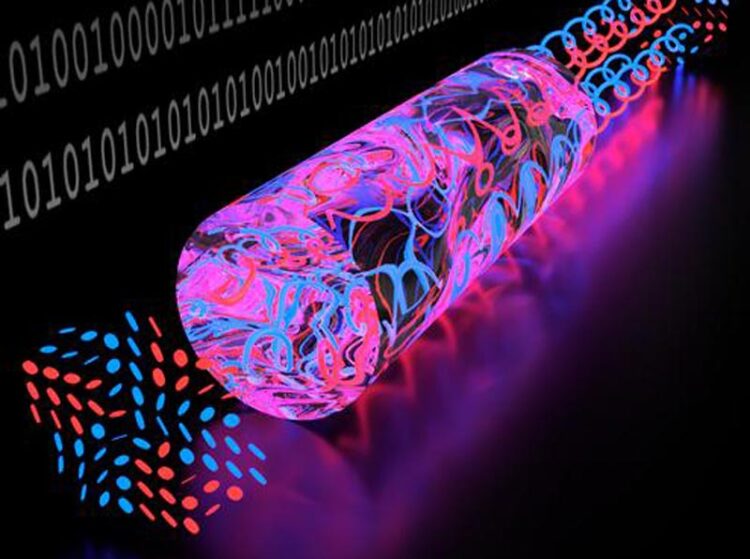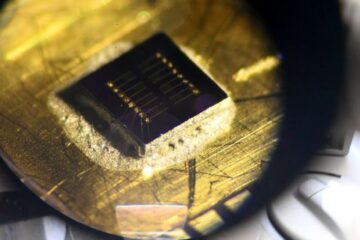Noise-free communication with structured light

New research in structured light means researchers can exploit the many patterns of light as an encoding alphabet without worrying about how noisy the channel is
Credit: Wits University
A new approach to optical communication that can be deployed with conventional technology.
The patterns of light hold tremendous promise for a large encoding alphabet in optical communications, but progress is hindered by their susceptibility to distortion, such as in atmospheric turbulence or in bent optical fibre. Now researchers at the University of the Witwatersrand (Wits) have outlined a new optical communication protocol that exploits spatial patterns of light for multi-dimensional encoding in a manner that does not require the patterns to be recognised, thus overcoming the prior limitation of modal distortion in noisy channels. The result is a new encoding state-of-the-art of over 50 vectorial patterns of light sent virtually noise-free across a turbulent atmosphere, opening a new approach to high-bit-rate optical communication.
Published this week in Laser & Photonics Reviews, the Wits team from the Structured Light Laboratory in the Wits School of Physics used a new invariant property of vectorial light to encode information. This quantity, which the team call “vectorness”, scales from 0 to 1 and remains unchanged when passing through a noisy channel. Unlike traditional amplitude modulation which is 0 or 1 (only a two-letter alphabet), the team used the invariance to partition the 0 to 1 vectorness range into more than 50 parts (0, 0.02, 0.04 and so on up to 1) for a 50-letter alphabet. Because the channel over which the information is sent does not distort the vectorness, both sender and received will always agree on the value, hence noise-free information transfer.
The critical hurdle that the team overcame is to use patterns of light in a manner that does not require them to be “recognised”, so that the natural distortion of noisy channels can be ignored. Instead, the invariant quantity just “adds up” light in specialised measurements, revealing a quantity that doesn’t see the distortion at all.
“This is a very exciting advance because we can finally exploit the many patterns of light as an encoding alphabet without worrying about how noisy the channel is,” says Professor Andrew Forbes, from the Wits School of Physics. “In fact, the only limit to how big the alphabet can be is how good the detectors are and not at all influenced by the noise of the channel.”
Lead author and PhD candidate Keshaan Singh adds: “To create and detect the vectorness modulation requires nothing more than conventional communications technology, allowing our modal (pattern) based protocol to be deployed immediately in real-world settings.”
The team have already started demonstrations in optical fibre and in fast links across free-space, and believe that the approach can work in other noisy channels, including underwater.
Journal: Laser & Photonics Review
Article Publication Date: 9-Jun-2023
All latest news from the category: Physics and Astronomy
This area deals with the fundamental laws and building blocks of nature and how they interact, the properties and the behavior of matter, and research into space and time and their structures.
innovations-report provides in-depth reports and articles on subjects such as astrophysics, laser technologies, nuclear, quantum, particle and solid-state physics, nanotechnologies, planetary research and findings (Mars, Venus) and developments related to the Hubble Telescope.
Newest articles

Sea slugs inspire highly stretchable biomedical sensor
USC Viterbi School of Engineering researcher Hangbo Zhao presents findings on highly stretchable and customizable microneedles for application in fields including neuroscience, tissue engineering, and wearable bioelectronics. The revolution in…

Twisting and binding matter waves with photons in a cavity
Precisely measuring the energy states of individual atoms has been a historical challenge for physicists due to atomic recoil. When an atom interacts with a photon, the atom “recoils” in…

Nanotubes, nanoparticles, and antibodies detect tiny amounts of fentanyl
New sensor is six orders of magnitude more sensitive than the next best thing. A research team at Pitt led by Alexander Star, a chemistry professor in the Kenneth P. Dietrich…





















